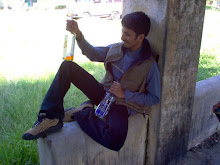
WHETHER MYSTERY OR MYTH…..
Jesus, the Christ did visit India? Affirms Subhrajit Mitra, producer of feature film “The Unknown Stories of the Messiah”. Obvious, as it is, to kick interest and anxiety amongst faithful, skeptics and other academically inclined scholars and historians.When did Jesus, if at all? He was crucified on a Friday by the Jews and being hitherto down the ages observed as ‘Good Friday’, the supreme sacrifice by the godman to the mankind. Gospels speaks of Jesus resurrected the following Sunday, and which is celebrated as Easter, but never attribute any givings about the Subhrajit’s claim.
Jesus journeyed to the East after the crucifixion, stayed and studied Hinduism and Buddhism, and was buried in a tomb in Kashmir…thus goes Mitra’s version. He even substantiates his belief from the mention found in scriptures and holy books of faiths in Jerusalem, Alexandria, Turkey, Persia, Afghanistan, Pakistan, Tibet and India. Quoting evidence in Hindu, Muslim and Buddhist scriptures that a “Jesus-like man” did traverse India’s Himalayas.
There is a book called “The Unknown Life of Jesus Christ” by the nineteenth century Russian adventure Nicolai Notovitch. This was inspiration for the film maker. The Russian was at Ladakh region in Jammu and Kashmir State on an expedition in the late 19th Century A.D. German scholar Holga Kersten, evincing interest in Notovitch’s account of Jesus traveling to the East, wrote two books “Jesus Lived in India” and “The Jesus Conspiracy” which was best selling.
Both the Germanian and Russian authors afloat the interesting episode of hearsays and down to ages stories of Jesus visiting Ladakh and the Kashmir Valley, as well as Uttar Pradesh, in particular the Varanasi city. They allege that in the Kan Yar area of Kashmir’s Srinagar District was Jesus buried in a tomb.
One aspect further deepening the mystery, rather still puzzling was, these two authors further propound that prior to resurrection Jesus indeed came to India as a young lad to take to learning from Hindu Gurus. Then, later returned to Palestine to teach what he studied in the East. He survived the crucifixion and returned to India and lived up to full bloom life of 120 years.
Notovitch asserted that while he was at Ladakh, he was shown a manuscript by the monks in the secleded Himis monastery which had detailed account of the hitherto “unknown life” of Jesus, or “Issa”, as he was generally referred to in the East. This Issa text, translated by a Lama for Notovitch from Tibetan, allege that during his “lost years” Jesus was educated by Yogis in India, Nepal and “the Himalaya Mountains”.
Notovitch declares that he has every reasons to believe that the manuscript purportedly dated from the third Century of the Common Era to be “true and genuine”, as its contents were written “immediately after the Resurrection”. Further, he maintained that the “two manuscripts” he perused at Himis were “compiled from diverse copies written in the Tibetan tongue, translated from rolls belonging to the Lassa library and brought from India, Nepal and Maghada 200 years after Christ”.
One could infer the dust Notovitch kicked when returned to Europe. The authenticity of the manuscript he clamed to have studied was much debated. He was even accused an impostor never visited the places he decribed.
One Swami Abhedananda, who rubbished Notovitch, himself journeyed into the arctic region of the Himalayas. His travelogue, “Kashmir O Tibetti” vividly portrays his visit to the Himis gonpa and has translation of two hundred twenty four verses in Bengali ended seconding the Notovitch text and his conviction of Issa legend.
In 1925, another Russian Philosopher Nicolai Roerich came to Himis. He was a scientist also. He apparently saw the same documents as Notovitch and Abhedananda and recorded his opinion adhering others’ of Issa.
There is one more interesting subsidiary to Issa’s imbroglio. In Hinduism, there are countless Puranas and Maharishi Veda Vyas compiled and classified them under 18 heads. One such is Bhavishya Maha Purana. While doing research for his film “The Unknown Stories of the Messaih”, Subhrajit Mitra was chanced up on a story elaborated in the Bhavishya Maha Purana. There described in it an encounter between King Shalivahana and a holy man near Srinagar referred to as Issa- Masih. Incidentally, Jesus is called the Messiah. This is long after the crucifixion. It portrays Issa’s arrival in the Kashmir region and how King Shalivahana the then ruler of the Kusham area (39-50 C.E.), entertained and treated the visiting holy man as a guest for some time. Bhavishya Maha Purana was supposedly dated back to 115 C.E.
Author and researcher Holga Kersten of Germany, who credited himself with his extensive research works, in his publication “Jesus Lived in India” accounts more than twenty historical documents standing testimony to the existence of Jesus in India, who referred as Issa and also widely known as “Yuz Asaf”. The vividly offers a thorough. Methodical and authoritative examination of the evidence of Christ’s life beyond the Middle East before the crucifixion and in India and elsewhere after it.
According to Kersten, “each story revolves round Jesus’s voyage to the East are vital source of information in itself to know better the eternal and central truths of Christ’s message, which are at peril by the profane ambitions of more or less secular institutions arrogating to themselves a religious authority. This is an attempt to open a way to a new future, firmly founded in the true spiritual and religious sources of the past”.
Cover Story.
Aag Arrow Webzine.
October 2007 Issue.
www.aagneyam.com/arrow

No comments:
Post a Comment